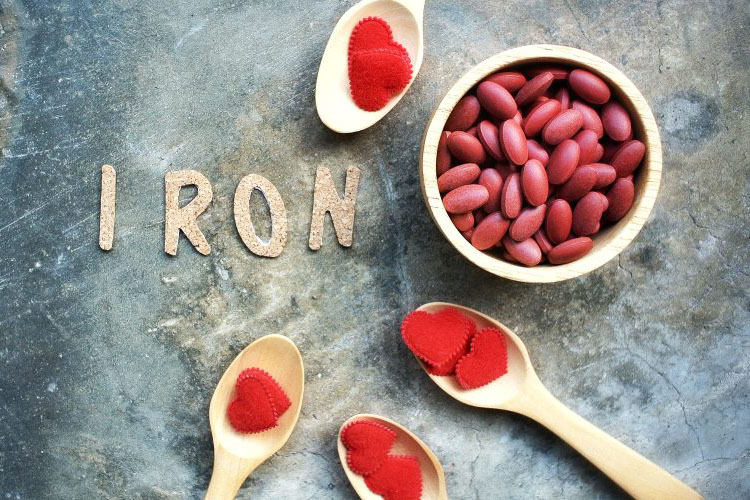Iron, Anemia & Why Popeye Ate Spinach

Have you ever wondered why your blood is red?
Blood is red because it contains iron and iron, which is one of the building blocks of red blood cells, gives it a red color.
Did you know that being low on iron can make you crave ice? Or even dirt and other non-edible things?
Being low on iron can cause your blood to be low on red blood cells. This is called anemia. Cravings for ice, dirt and other things are some of the symptoms of anemia. Other symptoms include hair loss, restless leg syndrome and feeling cold all the time.
Why does being low on iron make you tired and low on energy?
Red blood cells are like FedEx for blood. They pick up oxygen (O2) in the lungs and drop it off in the cells. Red blood cells go round and round the body, “FedExing” O2 from the lungs to the cells so the body can produce the energy it needs. When you don’t have enough red blood cells to carry oxygen to your cells, you don’t have the energy you need. Just going up a few stairs can leave you worn out and out of breath.
Why did Popeye eat spinach?
Popeye ate spinach because it is high in iron. However, he would have been better off eating red meat. Iron from red meat is absorbed about ten times more than iron from vegetables. He would have been even better off drinking orange juice with his meat, as Vitamin C increases iron absorption. Iron-Rich Food | List of Meats And Vegetables | Red Cross Blood
Why is drinking tea bad if you’re short on iron?
Just eating food or supplements with iron in them doesn’t always fix anemia that is caused by low iron. Just because iron makes it into your stomach doesn’t mean it will make it into your blood. Iron has to be absorbed, or “soaked up” by the body before you can use it. Otherwise, it will be excreted. Drinking tea decreases iron absorption by up to 80%.
Is anemia always caused by being low on iron?
There are multiple types of anemia but the most common type is related to iron levels. Other causes of anemia include cancer treatments, radiation, poison, lupus, bleeding, ulcers, pregnancy and heavy menstrual periods.
For more detailed information on anemia, visit Your Guide to Anemia | NHLBI, NIH
